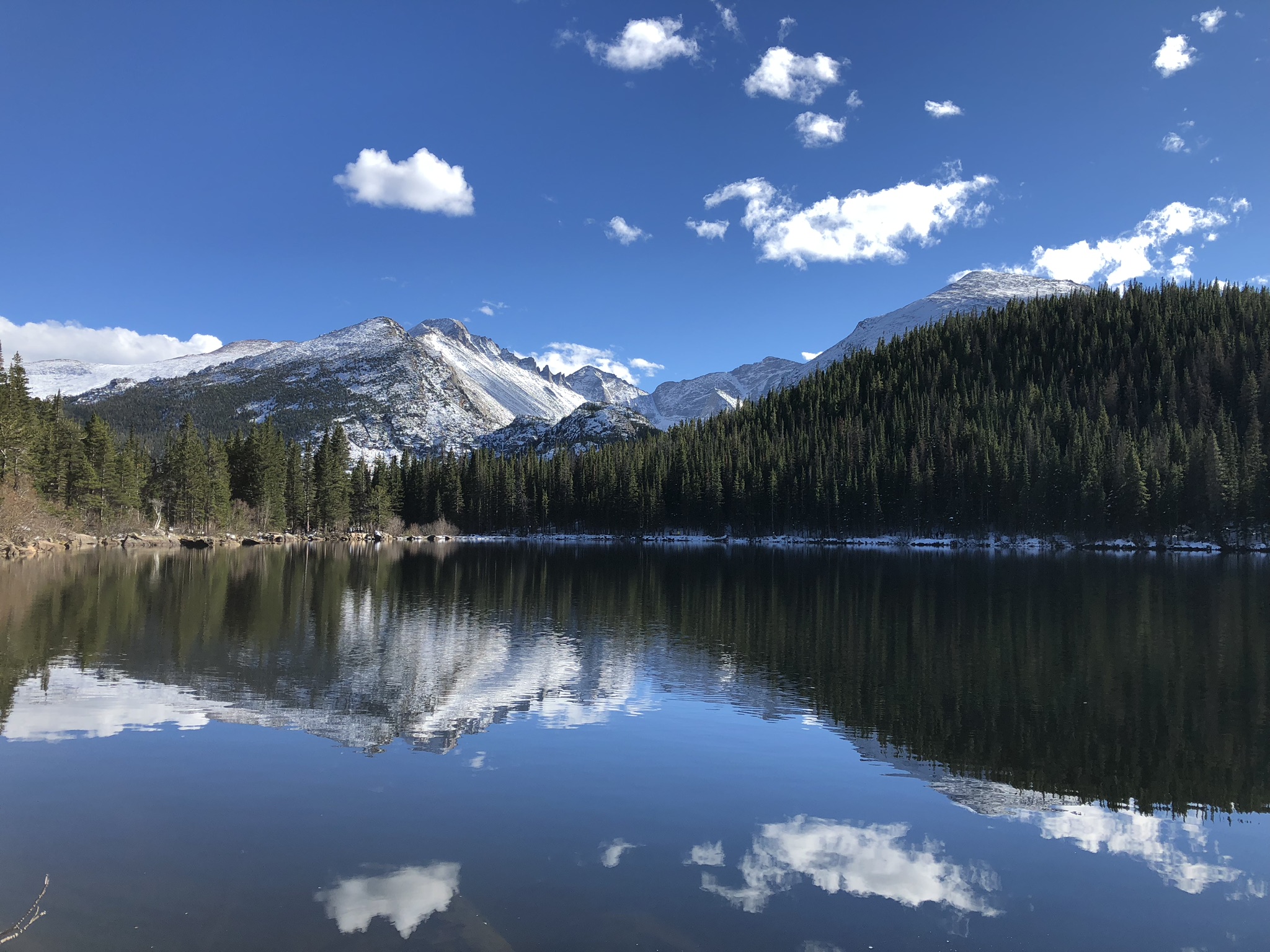The Local newsletter is your free, daily guide to life in Colorado. For locals, by locals.
On March 15—the same day Gov. Jared Polis instituted a statewide order that all ski resorts stop spinning their lifts in response to the COVID-19 pandemic—my husband and I drove to a typically deserted dirt road near our home in Eagle County to practice social distancing. Days before, I had taken advantage of warm March conditions and dry dirt to run that same road, passing only one wayward truck on my hour-long out and back. Now, thrust into pandemic protocols, we couldn’t find a spot to park our Jeep along the four-wheel-drive stretch. Small groups congregated in primitive camping pull-offs, and camper vans with out-of-state plates parked in each corner of the larger lots. We finally found a muddy patch away from the fray, and wondered aloud about our new normal.
A few days after that, the federal government had its own solution for cooped-up citizens trying diligently to social distance: It waived entry fees at America’s national parks.

“This small step makes it a little easier for the American public to enjoy the outdoors in our incredible national parks,” Interior Secretary (and Coloradan) David Bernhardt said in a March 18 news release. “Our vast public lands that are overseen by the Department offer special outdoor experiences to recreate, embrace nature and implement some social distancing.”
With social distancing in mind, thousands of visitors descended on Moab, Utah in the days before and after the directive, with the Salt Lake Tribune reporting that at Arches National Park on the outskirts of town, “a double line of cars stretched for at least a quarter-mile at the entrance.” At the same time, local hotels were reporting 80 percent occupancy despite public health warnings about the contagiousness of the virus, and at Zion National Park in the state’s southwest corner, the visitor lot was full by midmorning.
The deluge led to Moab’s mayor issuing a rare public rebuke of the tourist boon setting up camp around town. “We are concerned people will come and get sick….We are very worried about our capacity to serve others,” Mayor Emily Niehaus said at the time.
Moab’s local hospital has 17 beds and two ventilators—hardly enough to handle an influx in COVID-19 patients within its own regional population of 8,000, let alone additional cases from visitors. Since the Tribune article, the Southeast Utah Health Department ordered the closure of all area campgrounds and lodging facilities, and a handful of other national parks have imposed visitor restrictions despite the directive to be more accessible. As of March 20, Rocky Mountain National Park has closed to the public at the request of Estes Park’s mayor, who cited the stream of visitors as “a grave public health concern,” and that “adequate social distancing is not possible in many of the crowded areas of Rocky Mountain National Park this time of year” in a letter to the interior secretary.
Even before Polis’ statewide stay-at-home order was instituted earlier this week, similar concerns were being echoed in mountain communities across Colorado. Pitkin County, which has reported 16 cases thus far, issued its own stay-at-home rules before the statewide order, and last week, Gunnison County mandated that nonresidents return home immediately, and second homeowners were strongly encouraged to follow suit (16 cases have also been confirmed there). In Eagle County, 147 cases of COVID-19 have been confirmed, the mayor of Vail has tested positive, a prominent apres-ski entertainer succumbed to the virus, and an outbreak among groups of skiers returning home to Mexico has been traced back to Vail. In response, Vail Health CEO Will Cook issued a dire warning to the community about its ability to handle the spread.
“If we don’t commit to disciplined social distancing now, our 56-bed Vail Health Hospital will be overflowing within two to four weeks. We will not have enough respirators to keep people alive, and locals of all ages will be dying,” he wrote in a press release circulated widely on social media. “We are fighting a war of life and death right now. Not tomorrow, but now. It’s time to wake up. Sacrifices must be made, or we will lose people we know and love. At this moment, the focus must be on keeping lots of people from dying. Every three days, the number of infected individuals will continue to double unless social isolation is adopted by everyone here.”
For many, March is the unofficial start of road-trip season. Spring break crowds descend on ski resorts around the state, and desert destinations in Utah and the Western Slope draw early waves of mountain bikers and hikers to freshly thawed-out dirt. But this year isn’t typical.
“What people need to do right now is stay home, even if they are not sick,” said one Colorado Department of Public Health and Environment official via email. “Many communities have numerous cases, and traveling there only adds to the likelihood of additional spread. Also, travelers can further stress the health care system with non-COVID related injuries and illnesses.”
Colorado’s stay-at-home order doesn’t mean you can’t go outside at all, it just means reconsidering what outdoor amenities are close by, and when to use them. In light of closing regional campsites, Moab officials reassured prospective visitors, “We’ll be here when you come back later, but now is the time to find a gem in your own backyard.” Colorado authorities weren’t far behind, and Colorado Parks and Wildlife closed all public campgrounds on March 26, issuing refunds to anyone who had reserved a spot.
In the meantime, while no one really knows how long this will all last, try to focus on the fact that it’s only March, and that mud season really isn’t the best time to visit anyways.








